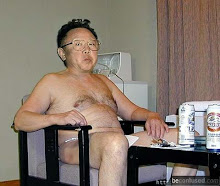September 13, 2012
Sept. 7th we had a very disappointing jobs
report. Another disappointing report is expected Friday the 14th. Hewlett
Packard has announced thousands of lay offs to start before the end of the
year. The Fed has initiated a new round of Quantitative Easing (QE) whereby
they purchase mortgage bonds in order to grow the economy. This could be known as QE 3, but QE’s 1 and 2
both had definitive dollar amounts and dates attached to them. This QE does not
have anything definite related to it; no dates and no dollars. No expectation
of $40 billion in monthly bond purchases ever ending.
The intent is to weaken the dollar and increase the amount
of money available in the economy. Printing money is a trick that third world
countries use to heat up their economies and generate inflation. A weak dollar
will generate inflation by increasing the costs of anything we import. Part of
the intent of QE is to make American made products more attractive pricewise. Does
that work? Did the first two rounds of QE help? Can anyone say, “QE 2 was a Godsend!
I could not have hired so many employees without it!”
I also have not heard any business owners, small or
otherwise, speak highly about our President’s economic policies. These four million
jobs that were created under his watch sure seem to be under the radar. How can
that be if there has been a constant 11 million unemployed since the end of the
recession three years ago? Statistics are tricky. It all depends on when you
look at the job market. If you look at the bottom of the market in 2009 and
compare it to today, I suppose you could say four million jobs were created. But
how many were really lost in this recession since 2007?
Let’s
consider a very cogent statistic; the job seekers vs. available jobs. As of
July 2012, the Bureau of Labor Statistics (BLS) shows it at 3.5 seekers per
job. At the height of the recession in July 2009, it was 6.7 to 1! The numbers
changed dramatically over the past three years. Why? Not because four million
jobs were created, it is because millions dropped out of the job market. Check this out. The ratio of unemployed as a percentage of the population is cogent. In 2007, over 63% of the job aged population was employed. By August of this year, it wsa just barely over 58%. How about those out of work for six months or more? In 2007, less than 20% of unemployed Americans were out of work for six months or more. As of August 2012 that number stands at 40% per the BLS. So, of the 11.5 million+ Americans currently out of work, about 5 million have been out of work for more than six months. Ouch. One stat that is hard to track is the statistic of those who have dropped out of the workforce and ended their job search. The percentage of Americans who have been out of work and dropped out of the workforce keeps growing. This is a statistic our government does not want everyone to know about. If you did, you might want to question their abilities at job creation.
Huffington Post recently called the government jobs reports a “Jobs Mirage.” The unemployment rate dropped because hundreds of thousands of Americans drop out of the job market each month and are no longer looking for work.
Quantitative Easing may work. It may work very slowly. It could also cause a greater disaster in relation to inflation. How about unleaded gas going for $5 or $6 or more per gallon? Not just in California but in the Midwest? A weak dollar makes imported oil more expensive. If you were a Saudi Prince, you would be thanking Bernanke right now! “Allah, has blessed me! Thank you, Mr. Chairman.”
* * *
A
final tidbit for you….Our car manufacturers are not very smart. QE will
increase the prices of Japanese, German, and Korean automobiles. GM, Chrysler,
and Ford will see the prices of foreign cars going up and raise the price of
American Cars. Why? “We need to remain competitive even in price!” It happened in
the 70’s during Jimmy Carter’s regime. History can repeat. Prior to the bailout, GM and Chrysler let the UAW run their businesses into the ground for them. The unsustainable union pensions and pay plans were doomed, but no fear. Our government was there to bail them out and make them whole. Now the UAW manages their holdings like GM and Chrysler from the White House. C’mon, our President is in the pocket of unions. We all know it. It’s no secret. The millions in government owned auto manufacturer shares are meaningless without some real negotiations with the unions. Those negotiations won’t start until our President’s second term. As a lame duck, will he be tough on the unions? Will he do the right thing to support the sustainability of our auto manufacturing here in the U.S.? Simple answer: No.

